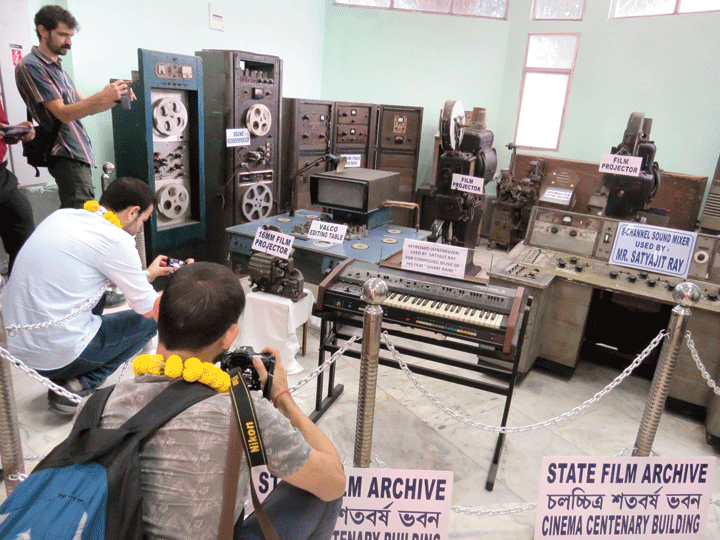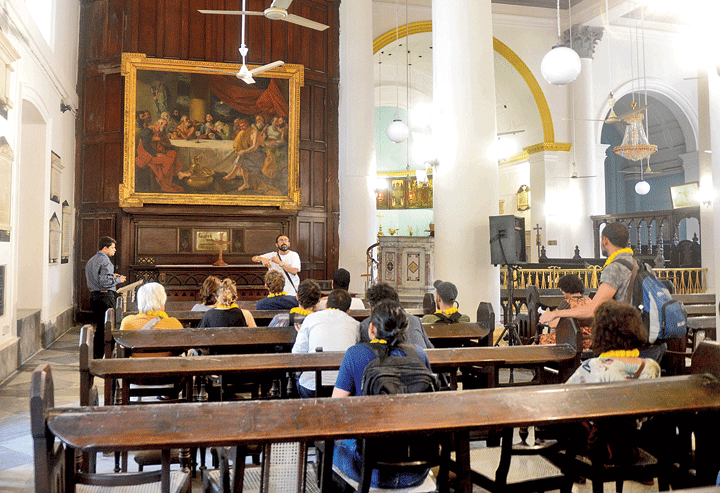A crane in the lawn of Technicians Studio in Tollygunge caught the eye of a motley group of filmmakers and producers from abroad who were clicking it on their mobile phones.
They were part of a group of 16 guests at the Kolkata International Film Festival being taken on a film heritage tour and had reached the studio after visiting Satyajit Ray’s house on Bishop Lefroy Road.
“You don’t see those cranes any more,” exclaimed Jeissy Trompiz of Venezuela. “Earlier, the cinematographer would sit with his camera on that little chair at its head and move up to get high shots. Now the camera is attached to the jib and is moved up,” he explained. Shooting for the TV serial Nishir Dak was on inside, and the team took a peek.
At Cinema Centenary Building at the erstwhile Radha Studio, the sight that greeted them was of equipment used by Satyajit Ray — from a synthesizer to an 8-channel sound mixer. “I taught Ray in our course at our cinema college in Rojava,” said Diyar Hesso from Kurdistan, as he clicked the screenplay of Apur Sansar preserved in a room on Ray.

Equipment, including some used by Satyajit Ray, at Cinema Centenary Building Sudeshna Banerjee
Walking into a hall displaying Uttam Kumar film stills, Lendita Zeqiray from Kosovo recalled that the first film she had seen in a theatre was an Indian one.
They were fascinated to see the cans of reels preserved in freezing temperatures. An official explained that all were 16mm nitrate-based films. On their way out, they met 77-year-old Gyan Banerjee, busy checking preserved film reels under a table lamp.
“So much care goes into preserving films that it shows how deeply Calcuttans love films,” said Anita Schneider of Germany. They were taken to St John’s Church and Lal Dighi where Ramanuj Ghosh, a guide from Calcutta Walks, told them about the heritage structures in the area. At Maghen David Synagogue, on hearing there were barely 20 Jews left in the city, Nart Zeqiraj from Kosovo exclaimed how well preserved it still was.
After lunch at Calcutta Bungalow in Shyambazar, the tour ended at Eco Park. “This tour was a splendid idea. It introduced us to the city’s history,” said Italian director Teresa Labonia.











